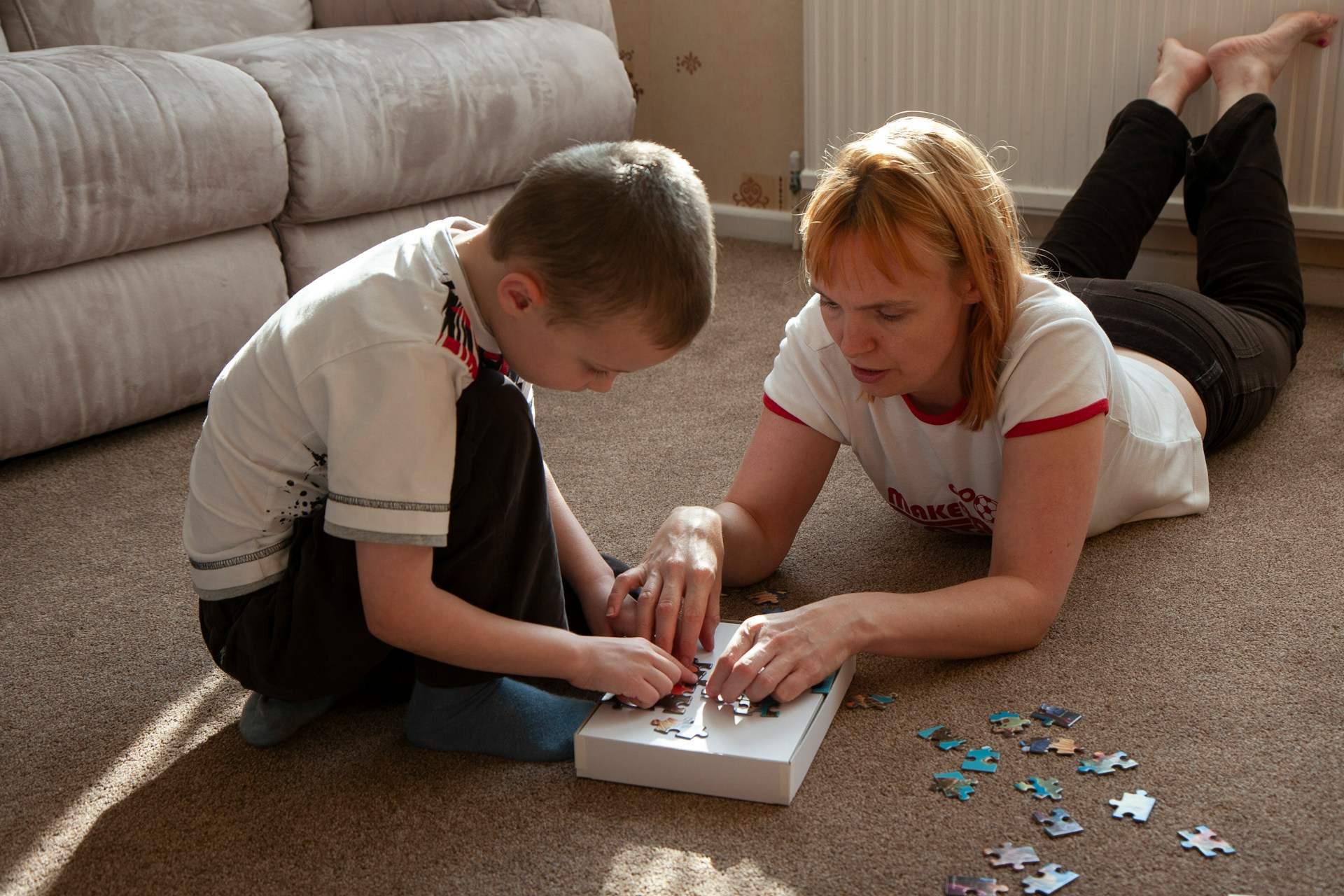
Virtual Autism Therapy
Harnessing Technology for Early Intervention in Autism
Understanding Virtual Autism and Its Emerging Therapies
Virtual autism refers to autism-like symptoms in young children, often linked to excessive exposure to digital screens. With the advances in telehealth and digital interventions, virtual autism therapy has become an accessible and promising approach to addressing these symptoms. This article explores the phenomenon of virtual autism, intervention strategies, technological approaches, and how families can leverage virtual therapies effectively.
What is Virtual Autism and Its Clinical Context

What is virtual autism, and what are its symptoms, causes, diagnosis, and treatment options?
Virtual autism is a term used to describe behavioral symptoms observed in young children, especially those aged between infancy and three years, which are believed to be linked to excessive exposure to digital screens and virtual environments. Unlike traditional autism spectrum disorder (ASD), virtual autism hinges on environmental influences rather than genetic or neurological causes.
Children exhibiting virtual autism often display symptoms such as social withdrawal, limited eye contact, delayed speech and communication skills, a reduced interest in their surroundings, and difficulty following instructions. These behavioral signs can mirror those seen in ASD, which makes understanding the differences critical for treatment.
The causes of virtual autism are primarily associated with early and excessive use of digital devices such as tablets, smartphones, and computers. Overexposure during critical periods of brain development may interfere with neural pathways responsible for social and language skills. This disruption potentially results in neurochemical imbalances that hinder typical developmental processes. However, it's important to note that research in this area remains limited, and virtual autism is not officially recognized as a medical diagnosis.
Diagnosis of virtual autism involves observing behavioral patterns and developmental delays. Since it is not an official clinical category, healthcare providers focus on ruling out ASD and other developmental conditions while assessing screen time habits and social behaviors. Tools utilized for assessment include validated developmental and behavioral screening instruments, often via telehealth modalities.
In terms of treatment options, the primary approach centers around reducing screen time and increasing face-to-face interactions. Interventions may include structured routines that eliminate or limit digital exposure, engaging children in hands-on activities, physical play, and social engagement. Early intervention can significantly improve outcomes, with some children showing reversal or reduction of symptoms following behavioral modifications.
Overall, while virtual autism shares symptoms with ASD, its environmental roots imply that with appropriate behavioral strategies, symptoms can often be alleviated or reversed. Families are encouraged to seek professional advice to develop tailored plans that foster healthy developmental trajectories.
Identifying Early Signs and Promoting Intervention

How can parents or caregivers identify signs of virtual autism and pursue early intervention?
Parents and caregivers are often the first to notice unusual developmental patterns that could indicate virtual autism, especially in children with high exposure to screens. Key signs include limited engagement in social interactions, such as avoiding eye contact or showing little response to name calling. Children may also exhibit delayed speech development, use fewer gestures, and prefer to be alone rather than play or communicate with others.
Additional behavioral cues encompass hyperactivity, irritability, or withdrawal. A child with virtual autism might seem disconnected from their surroundings, struggle to follow instructions, or show an unwillingness to explore their environment. They might also display short attention spans and difficulty transitioning between activities.
On the neurobiological front, assessments like MRI and EEG can help identify differences in brain structure and activity. For example, an enlarged amygdala or white matter anomalies could be linked to autism spectrum behaviors.
Early action is crucial. Reducing screen time is one of the most effective strategies to prevent or lessen symptoms. Setting routines that limit digital device use and promoting face-to-face interactions encourages social and cognitive development.
Engaging children in behavioral therapies such as Applied Behavior Analysis (ABA), speech therapy, and occupational therapy can support developmental progress. These therapies can be delivered virtually, ensuring accessibility for many families.
Beyond individual strategies, implementing comprehensive assessments and timely intervention can significantly alter a child's developmental trajectory. Parents should seek professional guidance when they observe early signs and consider working with healthcare providers to develop tailored plans to support their child's growth.
Strategies for Early Intervention
- Establish routines eliminating unnecessary screen time.
- Promote activities that involve social interaction, such as playdates or family games.
- Incorporate hands-on learning and physical activities.
- Seek professional assessments to confirm signs and plan interventions.
- Engage in virtual therapies like ABA that can be delivered from home.
Early intervention not only addresses current developmental delays but can also foster resilience and long-term well-being in children displaying virtual autism symptoms.
The Diagnostic Process in a Telehealth Era
What is the process involved in diagnosing virtual autism?
The process of diagnosing virtual autism has evolved with telehealth advancements, allowing assessments to be conducted remotely with a high degree of accuracy. It begins with initial screening questionnaires that parents complete to provide baseline information about their child's behavior, communication, and social skills.
Following the screening, children undergo at least two virtual evaluation sessions. The first typically lasts between two to four hours and includes structured play activities, social engagement observations, and cognitive assessments. These are designed to mimic traditional in-person evaluations while making use of validated, autism-specific tools adapted for virtual use.
During these sessions, trained clinicians observe the child's responses, interaction styles, and developmental progress. They may also conduct interviews with parents to gather detailed developmental histories and discuss any concerns.
In addition to live video assessments, parents can submit videos of typical behavior, which are reviewed by clinicians to gain further insights. This is especially valuable in capturing language skills, social interactions, and daily routines that might not be fully observable during scheduled sessions.
Reviewing medical records, developmental histories, and parent reports forms an essential part of the diagnostic process. This comprehensive approach ensures that the assessment is thorough and tailored to each child's unique needs.
The second shorter review session helps clarify findings, discuss preliminary impressions, and plan further steps if necessary.
Research indicates that virtual assessments, when conducted with standardized protocols and trained professionals, achieve diagnostic validity comparable to traditional in-person evaluations. This remote process not only maintains diagnostic rigor but also offers a comfortable environment for children, reducing the stress associated with clinical visits.
Ultimately, establishing an accurate virtual diagnosis of autism spectrum characteristics enables families to access appropriate therapies, including remote Applied Behavior Analysis (ABA), early intervention programs, and family support services. Early and accurate diagnosis is crucial to supporting children’s developmental trajectories and improving long-term outcomes.
In summary, the virtual autism diagnosis process is a meticulous, research-backed procedure that leverages modern telehealth technology, parent collaboration, and validated assessment tools to deliver timely and accurate evaluations.
| Step | Description | Additional Notes |
|---|---|---|
| Initial Screening | Parental questionnaires sent online | Quick overview of child's behaviors |
| Virtual Evaluation Sessions | 2-4 hour structured play, observation, and cognitive assessments | Conducted via secure platforms, involving parent input and live clinician observation |
| Video Submission | Parents upload videos of typical behavior | Provides additional behavioral context and supports diagnosis |
| Record Review & Parent Interview | Reviewing developmental history and concerns | Ensures a comprehensive understanding of child's background |
| Follow-up & Planning | Short review session to discuss findings and next steps | Enables accurate diagnosis and planning of interventions |
This process underscores the effectiveness of telehealth in diagnosing virtual autism, emphasizing the importance of technology, trained clinicians, and parent collaboration in achieving reliable outcomes.
Virtual Autism Therapy: Approaches and Modalities

What are common approaches used in virtual autism therapy, such as virtual ABA and virtual reality therapy?
Virtual autism therapy generally involves a combination of digital-based interventions tailored to support children on the autism spectrum. Among these, virtual ABA (Applied Behavior Analysis) therapy is prominent. It applies proven behavior modification techniques through a secure online platform, allowing real-time interaction between therapists and children via video conferencing tools like Zoom or Skype. This approach enables practitioners to conduct assessments, develop personalized treatment plans, and execute behavior interventions remotely. Parents often play an active role during these sessions, supporting skill acquisition and reinforcing positive behaviors outside formal therapy.
In addition to virtual ABA, virtual reality (VR) interventions are gaining traction. VR therapy immerses children in controlled, digital environments designed to enhance attention, social skills, and cognitive flexibility. These environments simulate real-world situations, such as social interactions or daily routine tasks, allowing children to practice skills in a safe setting. The use of VR aims to overcome some limitations of traditional therapy by providing highly engaging and customizable experiences.
Digital tools, including interactive games, videos, and online exercises, supplement these therapies. They are utilized to target speech, communication, and social interaction skills, making learning fun and engaging for children.
Family involvement is crucial across these approaches. Caregivers are often trained to support therapy goals at home, reinforce learning outside of sessions, and help sustain progress.
While these virtual methods have demonstrated promising results—improving communication, social behaviors, and adaptive functioning—there are some challenges. The effectiveness can be influenced by factors such as access to reliable internet, appropriate devices, and the child's sensory preferences.
In summary, virtual autism therapy integrates behavior-based techniques, cutting-edge digital environments, and family participation to offer flexible, accessible interventions for children with ASD.
Evaluating the Effectiveness, Benefits, and Challenges of Virtual Therapy
What are the benefits and limitations of virtual autism therapy, and how effective is it?
Virtual autism therapy has become an increasingly popular approach to supporting children displaying autism-like symptoms, especially in cases linked to excessive screen exposure in early childhood. This form of therapy offers several notable benefits.
One of the primary advantages is accessibility. Families in remote or underserved areas can access expert services without long travel commitments. Virtual therapy sessions are flexible, making scheduling easier for busy families. These sessions are conducted through HIPAA-compliant digital platforms such as Zoom or Skype, ensuring privacy and security.
Research indicates that virtual Applied Behavior Analysis (ABA) therapy can yield improvements comparable to in-person sessions. Studies show positive outcomes in communication, social skills, and adaptive behaviors, especially when parents actively participate. Virtual sessions allow real-time interaction with trained therapists via video conferencing, which can include interactive tools like digital whiteboards and online behavior-tracking apps.
The virtual format also promotes increased family involvement. Parents can learn strategies during sessions and reinforce skills at home, fostering consistency and better generalization of skills.
Despite these benefits, virtual therapy faces some challenges. Reliable internet connectivity and suitable technology are necessary, which might not be available to all families. Maintaining children’s engagement during sessions can be difficult, particularly for those with sensory or focus challenges.
Moreover, while long-term data is still emerging, initial evidence suggests that virtual ABA therapy holds promise, especially when combined with active parental support. It offers the potential to adapt to individual needs effectively, with personalized, strength-based approaches developed on decades of research.
In summary, virtual autism therapy presents a viable alternative or complement to traditional in-person services. Its effectiveness depends on multiple factors, including technology, therapist expertise, and family involvement. Ongoing research continues to define best practices and expand understanding of its long-term success.
How do clinical outcomes and improvements compare in virtual versus in-person therapy?
Numerous studies compare the progress of children receiving virtual ABA therapy to those involved in traditional face-to-face treatments. The results are encouraging, showing that, with proper implementation, virtual therapy can produce similar improvements in key developmental areas.
Children typically experience gains in social interaction, communication, and daily living skills. The consistency of sessions and active involvement of parents or caregivers often enhance these outcomes.
It is essential to note that individual factors such as initial skill level, engagement, and specific needs influence therapy success. Some children respond exceptionally well to virtual formats, especially when environments are controlled and tailored.
In essence, clinical outcomes are favorable, provided that technological barriers are addressed, and therapy is delivered by trained, experienced professionals.
Differentiating Virtual Autism from ASD and Related Conditions

How is virtual autism different from Autism Spectrum Disorder (ASD) and other developmental conditions?
Virtual autism is a term used to describe autism-like symptoms in children, especially those under two years old, which are believed to be linked to excessive screen exposure. These symptoms include delayed speech, reduced eye contact, short attention spans, social withdrawal, and difficulty connecting with others. Importantly, these signs are often reversible if screen time is reduced and real-world interactions are increased.
In contrast, Autism Spectrum Disorder (ASD) is a diagnosed neurodevelopmental condition characterized by persistent challenges in social communication, restricted interests, and repetitive behaviors. ASD is influenced by neurobiological factors and is present throughout a person’s life. It is identified based on specific diagnostic criteria outlined in manuals such as the DSM-5, often confirmed using standardized assessment tools.
While children with virtual autism display symptoms similar to ASD, their symptoms stem primarily from environmental factors—mainly excessive digital device usage—rather than inherent neurological differences. Unlike ASD, virtual autism does not have official recognition in diagnostic manuals and is seen more as an environmental condition that can improve with disruption of the contributing factors.
The potential for reversibility distinguishes virtual autism from ASD significantly. Reducing screen exposure and encouraging face-to-face interaction can lead to marked improvements or even full reversal of symptoms associated with virtual autism. Conversely, ASD typically requires ongoing support and intervention; its symptoms are generally lifelong, although early intervention can significantly improve outcomes.
What are the diagnostic criteria and assessment tools?
For ASD, diagnosis involves comprehensive behavioral evaluations using standardized tools such as the Autism Diagnostic Observation Schedule (ADOS) and the Autism Diagnostic Interview-Revised (ADI-R). These assessments focus on social, communicative, and behavioral patterns. Neurodevelopmental history, developmental milestones, and parent reports also play a crucial role.
Virtual autism, however, is primarily identified through behavioral history emphasizing screen time and its impact on development. Since it is not recognized as an official diagnosis, assessments often involve observational checklists, developmental screenings, and detailed histories of media consumption. Clinicians may use validated behavioral observation tools, but the focus remains on environmental factors and developmental delays rather than underlying neurological anomalies.
What are the implications for treatment and prognosis?
Treating virtual autism primarily involves environmental modifications—reducing screen time, promoting active face-to-face interactions, engaging children in hands-on activities, and encouraging physical exertion. These interventions often lead to rapid improvements, especially when implemented early.
Children diagnosed with ASD require comprehensive, multidisciplinary support, including behavioral therapies such as Applied Behavior Analysis (ABA), speech therapy, and occupational therapy, aimed at addressing core deficits. The prognosis for ASD depends on the severity of symptoms and the timing of intervention but is generally considered lifelong.
By understanding these differences, caregivers and professionals can better tailor their approaches. Addressing virtual autism involves prompt environmental adjustments, with the promising potential for reversal, whereas ASD may require ongoing, structured therapy and support.
| Aspect | Virtual Autism | ASD | Distinguishing Factors | | --- | --- | --- | --- | | Origin | Environmental (excess screen time) | Neurobiological/genetic | Virtual autism often reversible; ASD is lifelong | | Symptoms | Speech delays, social withdrawal, short attention | Persistent social deficits, repetitive behaviors | Reversibility with intervention for virtual autism | | Diagnosis | Behavioral history, screen exposure | Standardized assessments (ADI-R, ADOS) | Formal diagnosis required for ASD | | Treatment | Reduce screen time, increase real-world interaction | Multidisciplinary therapies | Treatment focus differs; virtual autism is environmentally influenced | | Prognosis | Often reversible with early intervention | Lifelong, but improved with therapy |
Understanding these differences can help in making informed decisions about intervention strategies and in setting realistic expectations for developmental progress.
Accessing Virtual Autism Therapy at Home and Its Future Potentials

How can virtual autism therapy be accessed or implemented at home or remotely?
Virtual autism therapy has become an increasingly accessible option for families seeking intervention from the comfort of their homes. The process primarily involves the use of HIPAA-compliant digital platforms, such as Zoom or Skype, which facilitate real-time, interactive sessions between the therapist and the child.
To effectively implement virtual therapy, families need to prepare a quiet, clutter-free environment that minimizes sensory distractions. Reliable internet connection, appropriate lighting, and a device capable of video conferencing are essential for smooth sessions.
During therapy, parents often play an active role, supporting their child's learning and reinforcing skills outside of scheduled sessions. This involvement not only enhances the child's progress but also empowers parents with a deeper understanding of ABA techniques.
Choosing the right provider is crucial. Families should assess credentials, experience with virtual modalities, and the technology used, emphasizing those that prioritize privacy and confidentiality through secure platforms. Many organizations also utilize telehealth approaches for remote autism assessment, employing tools like digital recordings and online tests to facilitate diagnosis and collaboration with healthcare professionals.
The expansion of telehealth services has notably increased accessibility, especially for those living in remote or underserved areas. Combining virtual therapy with remote assessment methods has transformed how services are delivered, making early intervention more feasible and efficient.
Empowering Families with Digital Interventions
As technology becomes increasingly integrated into healthcare, virtual autism therapy offers a versatile and accessible avenue for early intervention. Reducing screen time, promoting face-to-face interaction, and leveraging evidence-based digital tools can be transformative for children showing autism-like symptoms related to digital exposure. Families are encouraged to seek qualified telehealth providers, participate actively in therapy, and stay informed about emerging therapies and research. With a holistic approach involving environmental adjustment, behavioral therapy, and technological support, virtual autism interventions can help children develop essential social, communicative, and cognitive skills, opening new pathways for inclusive and effective treatment.
References
- Prosper Health: Online Adult Autism Therapy and Testing Services
- Virtual ABA Therapy - Bluesprig Autism
- Virtual Autism: What is it and How is it Assessed?
- Virtual autism among children: A leading hazard of gadget exposure ...
- Does Virtual ABA Therapy Work? A Guide for Parents
- Autism Diagnosis for Children - Positive Development
- evaluation of a virtual autism training for clinicians - PubMed Central


Partner with us on your child's journey
Milestone Achievements offers evidence-based ABA therapy to help children with autism reach their full potential. Together we’ll set meaningful goals and celebrate progress every step of the way.
Start ABA Services Today





